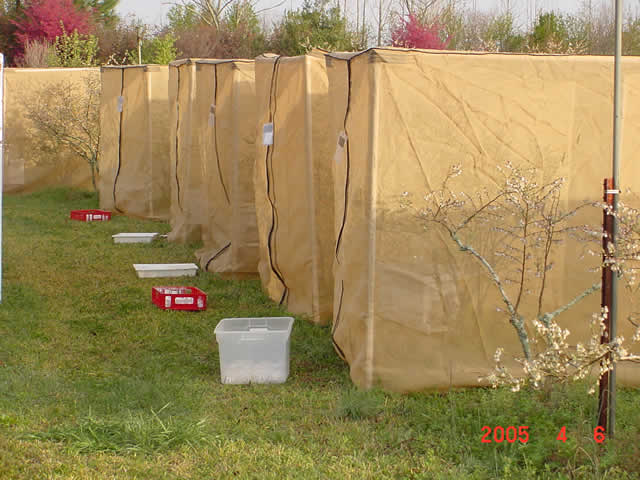Publication Abstracts
Summaries and Document Links (1987-Present)

1. Drone production by young versus old worker honeybees in queenless colonies. Delaplane, K.S., & J.R. Harbo. 1987. Apidologie 18(2): 115-120
SUMMARY Drone production between 2 groups of worker honeybees (Apis mellifera L.) was compared in Baton Rouge, Louisiana : an older heterogeneous population of bees (> 54 days old at beginning of egg laying period), and a smaller group of young bees (11-15 days old). Six of 9 broodless, queenless colonies (providing the " old " bees) were each given 150 young bees that were heterozygous for visible mutations. The remaining 3 colonies were controls. Young workers produced a much higher proportion of drones in 3 of 6 the test colonies than did the old workers. Old workers produced at least as many drones per bee as did the young workers in the other 3 test colonies. Workers > 54 days old produced eggs in all colonies.

2. Effect of queenlessness on worker survival, honey gain, and defence behaviour in honeybees. Delaplane, K.S., & J.P. Harbo. 1987. Journal of Apicultural Research 26(1): 37-42
SUMMARY The effects of queenlessness on worker honeybees (Apis mellifera) were tested with 50 colonies in groups of 10 (five treatments and two replicates) in August, October and December, 1984 and February and April, 1985 in Baton Rouge, Louisiana. The 10 colonies in each group were all from a single heterogeneous mixture of bees, and each colony began with about 6000 workers and no brood. The five treatments each lasted for 28 days and consisted of (1) caged queen for 28 days, queenless for 0 days; (2) caged queen for 21 days, queenless for 7 days; (3) caged queen for 14 days, queenless for 14 days; (4) caged queen for 7 days, queenless for 21 days and (5) caged queen for 9 days, laying queen for 19 days (control). With prolonged queenlessness worker survival, colony weight gain and defence behaviour (number of stings) decreased. Queenlessness did not induce drifting.

3. A re-examination of double grafting. Delaplane, K.S., & J.R. Harbo. 1988. American Bee Journal 128(6): 439-440
Double grafting did not produce heavier queens than did single grafting. If weight is a good indicator of queen quality, this study shows that double grafting is not worth the extra effort. Additionally, priming of cell cups before grafting into them did not improve weight of queens, but it did improve cell acceptance in nurse colonies.

4. Survey of miticide use in Georgia honey bee hives. Delaplane, K.S. 1992. American Bee Journal 132(3): 185-187
ABSTRACT In 1990, an estimated 32,007 Georgia bee hives were treated with menthol to control tracheal mites, and 20,771 hives were treated with Apistan® to control Varroa mites. In 1990, Georgia beekeepers spent at least $122,343 on miticides. If Georgia beekeepers had to rely solely on non-chemical controls against mites, they predict state-wide losses of hives and hive products of at least $5,748,091. Survey respondents represented 51,608 bee hives which are 46.5% of the hives in Georgia at the end of 1990.

5. Controlling tracheal mites (Acari: Tarsonemidae) in colonies of honey bees (Hymenoptera: Apidae) with vegetable oil and menthol. Delaplane, K.S. 1992. Journal of Economic Entomology 85(6): 2118-2124
ABSTRACT The efficacy of vegetable oil and menthol was tested in controlling tracheal mites (Acarapis woodi [Rennie]) in honey bees (Apis mellifera L.). Each of 40 bee colonies was given one of four treatments: (1) vegetable oil, (2) menthol, (3) vegetable oil and menthol, or (4) no treatment (control). Colonies were sampled for percentage bees infested and severity of infestation per infested bee on nine dates from 14 February to 7 August 1991. Treatments were applied on 27 February and removed on 18 April. On 3 April, mite infestation was reduced in the oil + menthol treatment. On every sampling date after 3 April, infestation was reduced by all oil or menthol treatments. Compared with menthol, vegetable oil gave equivalent mite control on all sampling dates. From 3 April through 9 May, infestation was lowest in the oil + menthol treatment. Except for one sampling date, severity of infestation per infested bee was unaffected by treatments.

6. Effects of Terramycin™ antibiotic and Apistan™ acaricide on colonies of honey bees (Hymenoptera: Apidae) infested by Varroa jacobsoni Oudemans (Parasitiformes: Varroidae). Delaplane, K.S. 1995. Journal of Economic Entomology 88(5): 1206-1210
ABSTRACT The effects of the antibiotic Terramycin and the acaricide Apistan were tested on colonies of honey bees, Apis mellifera L., infested with the parasitic mite Varroa jacobsoni Oudemans. Interest in antibiotics stems from the possibility that V. jacobsoni vectors pathogens. Each of 20 colonies randomly received 1 of 4 treatments: (1) 7 applications (28.3 g, 198.1 g total) of a standard Terramycin and powdered sucrose mixture, (2) 2 Apistan strips, (3) Terramycin and Apistan or (4) no treatment as an experimental control. Terramycin increased the body weight of hive bees of mixed ages and of newly emerged adult bees. Apistan increased the body weight of hive bees of mixed ages, maintained colony population size during a period of apiary-wide decline, decreased the number of V. jacobsoni per newly emerged bee, and decreased the incidence of misshapen newly emerged bees. Overall, the effects of Terramycin antibiotic and Apistan acaricide on V. jacobsoni-infested colonies were favorable or neutral, and no interactions between the 2 products were detected.

7. Bee foragers and their pollen loads in south Georgia rabbiteye blueberry. Delaplane, K.S. 1995. In Proceedings of the American Bee Research Conference. American Bee Journal 135(12): 825-826
ABSTRACT Rabbiteye blueberry (Vaccinium ashei Reade) is an important crop in parts of the southeastern United States. Habropoda laboriosa (F.) is the most efficient bee pollinator of rabbiteye blueberry, followed by bumble bee (mostly Bombus impatiens Cresson) queens; fruit set following single visits by honey bees (Apis mellifera L.) is reportedly no higher than that in flowers from which bees are excluded (Cane, J.H. & J.A. Payne, Alabama Agric. Exp. Sta. 37:4). Carpenter bees (Xylocopa spp.) rob V. ashei by slitting the corolla to suck nectar, completely bypassing the sexual column. Honey bees that visit flowers slit by Xylocopa spp. usually visit the robbery holes and, likewise, avoid the sexual column.
Although individual honey bees are inefficient pollinators of rabbiteye blueberry, they are ubiquitous and abundant in orchards. On the other hand, the more efficient bumble bees and H. laboriosa can be locally abundant or rare (Cane, J.H. & L.A. Payne, Ann. Entomol. Soc. Am. 86:577-588). Thus, questions remain about the practical pollination efficacy of bees visiting rabbiteye blueberry.
On 21, 27, 28, and 29 March 1995, I surveyed bee foragers on rabbiteye blueberry in four orchards in Clinch County, Georgia. With a handheld audio recorder, I walked between rows of V. ashei, and for every bee I saw on a flower, I recorded its genus and its behavior robbing, probing for nectar, carrying pollen on its corbiculae). Every sampling episode (n=12) lasted 30 minutes. I collected voucher bee specimens and later identified them in the laboratory. I collected bees on flowers individually in clean glass vials, washed each bee in 0.5 ml distilled water, agitated the bee and water with a vortex shaker for 30 sec, examined the suspended pollen microscopically with a cell counting chamber, and compared percentage Vaccinium pollen carried by different bee taxa, by robbing bees, and by bees visiting flowers legitimately.
Apis mellifera was the most numerous bee forager in rabbiteye blueberry, followed in order by B. impatiens queens, B. impatiens workers, X. micans. X. virginica, and H. laboriosa. Percentage pollen foragers was highest with B. impatiens workers (76.3 %), followed by H. laboriosa (60%), B. impatiens queens (38%), A. mellifera (3.2%), and X. micans (1%). Percentage robbers was highest with both Xylocopa species (100%), followed by A. mellifera (93.2%), H. laboriosa (13.3%), B. impatiens workers (2.2 %), and B. impatiens queens (0%). On average, percentage Vaccinium pollen on bodies of bees was highest with B. impatiens queens and workers (70.2 ± 34.7%), followed by A. mellifera (67.7 ± 43.1%), H. laboriosa (58.1 ± 27.5%), and X. virginica (29.5 ± 38.1%). Percentage Vaccinium pollen on bodies of bees was higher with legitimate flower foragers (77.7 ± 29.6%) than with robbers (47 ± 42.9%).

8. Effects of delayed acaricide treatment in honey bee colonies parasitized by Varroa jacobsoni and a late-season treatment threshold for the south-eastern USA. Delaplane, K.S. & W.M. Hood. 1997. Journal of Apicultural Research 36(3/4): 125-132
SUMMARY We set up 72 colonies of honey bees (Apis mellifera) in the piedmont region of Georgia and South Carolina, USA (2 states x 6 apiaries per state x 6 colonies per apiary) in April 1995. Colonies were individually housed in single-chamber Langstroth hive bodies and one honey super, started with standard mail-order 0.9 kg (2 lb) packages of bees containing small incipient populations of the parasitic mite Varroa jacobsoni, and managed optimally as for honey production. Within each state, each apiary was assigned one of the following treatments: (1) treatment with Apistan acaricide in June, (2) treatment in August, (3) treatment in October, or (4) no treatment. By December, colony bee populations were optimum in August-treated apiaries. Month of treatment did not affect bee body weight. There were treatment by state interactions for number of sealed brood cells, colony mite populations, and percentage of brood cells with disease-like symptoms. Our data suggest that late-season acaricide treatments in first-year colonies in the south-eastern USA piedmont are justified at colony mite populations of 3172 ± 324, 300-bee ether roll mite levels of 15 ± 1.4, and overnight adhesive bottom board insert mite levels of 117 ± 15 in colonies with 24 808 ± 2245 bees and 1825 ± 327 cm2 sealed brood; these conditions occurred in mid-August. Acaricide treatments in or before August may eliminate mite-associated brood pathology in the south-eastern USA. Bottom board inserts were more reliable predictors of colony mite populations compared to the ether roll method.

9. Effects of the slatted rack on brood production and its distribution in the brood nest. Delaplane, K.S. 1999. American Bee Journal 139(6): 474-476
ABSTRACT In newly-installed package colonies, the slatted rack significantly increased the proportion of colony brood being reared near hive entrances, but did not affect overall quantity of brood produced. The experiment was replicated over three years.

10. Economic threshold for Varroa jacobsoni in the southeastern USA. Delaplane, K.S. & W.M. Hood. 1999. Apidologie 30: 383-395
ABSTRACT This research was designed to determine economic thresholds for Varroa jacobsoni mites in mature overwintered colonies under conditions that encourage or discourage mite immigration. Congruent data from the present study and our earlier work suggest that a true late-season (August) economic threshold for mites in the southeastern USA lies within a range of mite populations of 3 172-4 261, ether roll mite levels of 15-38, and overnight bottom board insert mite levels of 59-187 in colonies with bee populations of 24 808-33 699. Overwintering colonies can benefit from an additional early-season (February) treatment. This benefit was realized in colonies which in February had the following average values: mite populations 7-97, ether roll 0.4-2.8, bottom board inserts 0.6-10.2 and bee populations 12 606-13 500. Continuous acaricide treatment never achieved colony bee populations or brood number significantly higher than in colonies treated more conservatively. There is evidence that minimizing mite immigration has the benefit of delaying the onset of economic thresholds.

11. Field control and biology studies of a new pest species, Aethina tumida Murray (Coleoptera: Nitidulidae), attacking European honey bees in the Western Hemisphere. Elzen, P.J., J.R. Baxter, D. Westervelt, C. Randall, K.S. Delaplane, F.A. Eischen, L. Cutts, & W.T. Wilson. 1999. Apidologie 30: 361-366
ABSTRACT The small hive beetle, Aethina tumida Murray, is a nitidulid species newly recorded attacking honey bees in the Western Hemisphere. We initiated field and laboratory tests on the control and biology of this new pest. Very high mortality of adult and larval A. tumida in Florida and Georgia hives resulted from field tests using 10 % coumaphos in plastic strips in trapping devices on the hive bottom: as high as 90.2 % beetle mortality occurred in hives in Florida. Adult beetles were found in the laboratory to feed on honey bee eggs, completely consuming all eggs, even in the presence of honey and pollen. Odors from hive products plus adult bees were found to be significantly attractive to flying adult beetles, as evidenced in baited trap studies. Hive products alone or bees alone were not attractive to adult A. tumida.

12. Effects of hygienic queens, comb age, and colony microclimate on expression of chalkbrood disease symptoms. Dedej, S. & K.S. Delaplane. 2000. In Proceedings of the American Bee Research Conference. American Bee Journal 140(11): 903-904
Hygienic behavior in selected queen lines has been shown to reduce the incidence of chalkbrood disease symptoms (Spivak et al. 1998 Apidologie 29: 291-302). Nelson et al. (1982 Am. Bee J. 122: 29-33) showed that chalkbrood may be reduced in colonies housed on new comb. Laboratory evidence indicates that chalkbrood symptoms may increase under conditions of elevated relative humidity (Flores et al. 1996 Apidologie 27: 185-192).
We were interested in testing the interactive effects of hygienic queens, comb age, and colony microclimate on the expression of chalkbrood symptoms. Forty-eight colonies were set up; 24 were assigned high interior relative humidity (60.5 ± 1.7% RH and 24 were assigned low relative humidity (58.1 ± 0.6%). These differences were achieved by inserting a sheet of plastic between the inner and outer covers of each high humidity colony. Each colony within humidity class was assigned one of the following treatments: (1) new comb/non-hygienic queen, (2) new comb/hygienic, (3) old comb/non-hygienic, and (4) old comb/hygienic. Each colony was inoculated with the disease. For each of days 14, 21, 28, and 49, we determined for each colony the number of sealed brood cells and sum of chalkbrood cadavers.
High variances and missing values resulting from superseded queens prevented any significant differences. On average, brood production was consistently highest in colonies with low humidity, old combs, and (except for day 14) hygienic queens. The number of chalkbrood cadavers did not vary meaningfully according to humidity. Except for day 14, the number of chalkbrood cadavers was consistently lowest in colonies with old combs and hygienic queens.

13. Effects of top- versus bottom-supering on honey yield. Berry, J.A. & K.S. Delaplane. 2000. American Bee Journal 140(5): 409-410
SUMMARY Bottom-supering failed to achieve significantly higher honey yields than the less labor-intensive method of top-supering. The experiment was replicated across three apiaries and two nectar flows.
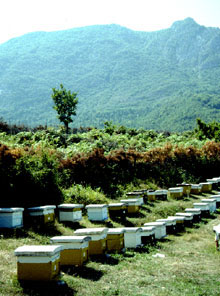
14. A technical and economic evaluation of beekeeping in Albania. Dedej, S., K.S. Delaplane & E. Gocaj. 2000. Bee World 81(2): 87-97
INTRODUCTION Albania, a Mediterranean country with a hybrid population of Apis mellifera carnica and Apis mellifera macedonia, highly adaptable to its favorable conditions, has good opportunities and prospects for developing beekeeping. Albanian beekeepers have a long tradition in this activity.

15. Effects of comb age on honey bee colony growth and brood survivorship. Berry, J.A. & K.S. Delaplane. 2001. Journal of Apicultural Research 40(1): 3-8
SUMMARY This research examined the effects of comb age on honey bee colony growth and brood survivorship. Experimental old combs were of an unknown age, but were dark and heavy as typical of combs one or more years old. New combs were produced just prior to the beginning of the experiment and had never had brood previously reared in them. Either old or new combs were installed into each of 21-24 nucleus colonies each year over a three-year period. On average, colonies with new comb produced a greater area (cm2) of brood, a greater area (cm2) of sealed brood, and a higher weight of individual young bees (mg). Brood survivorship was the only variable significantly higher in old comb.

16. A scientific note on Apis mellifera brood attractiveness to Varroa destructor as affected by the chemotherapeutic history of the brood. Ellis, J.D., Jr. & K.S. Delaplane. 2001. Apidologie, 32: 603-604
SUMMARY Our results suggest that the degree of varroa mite attraction toward honey bee brood is relatively unaffected by the chemotherapeutic history of the brood and by variation in brood genetic homogeneity within a range found with non-selected queens either open-mated or single drone-inseminated. If the attraction of brood is useful as a selection criterion for breeding programs, our data suggest that the chemotherapeutic history of brood is a negligible source of environmental variation, but that some time (trial) effects may be expected.

17. Efficacy of a bottom screen device, ApistanJ , and ApilifeVARJ in controlling Varroa destructor. Ellis, James D., Jr., Keith S. Delaplane, & W. Michael Hood. 2001. American Bee Journal 141(11): 813-816
ABSTRACT This study tested the efficacy of a hive bottom screen device in controlling varroa mites, when used alone or in conjunction with the miticides ApistanJ and ApilifeVARJ. Thirty six colonies were equalized and each assigned to one of six treatments: (1) no treatment, (2) bottom screen, (3) Apistan, (4) Apistan + screen, (5) Apilife, and (6) Apilife + screen. Adult bee populations were not affected by treatment, but the number of brood cells was significantly reduced in colonies treated exclusively with Apilife compared to that of colonies treated with Apistan or exclusively with a bottom screen. Brood production was numerically highest in colonies treated exclusively with a bottom screen. Varroa populations were significantly reduced in colonies receiving acaricide compared to non-treated colonies. Varroa populations in colonies treated exclusively with a bottom screen were 14.9 % lower than that of non-treated colonies, but this difference was not significant. The bottom screen did not affect the percentage of varroa mite population phoretic on adult bees. Apistan provided 100% mite control in South Carolina whereas in Georgia it provided 0% control in colonies treated exclusively with Apistan. With the addition of a bottom screen, Apistan-treated colonies in Georgia experienced an average mite control of 44.3%. This suggests that fluvalinate resistance exists in Georgia varroa mites. It also indicates that a bottom screen may help compensate for reduced acaricide efficacy. Average efficacy of Apilife ranged from 65.2 - 97.1%.

18. Controlling small hive beetles (Aethina tumida Murray) in honey bee (Apis mellifera) colonies using a modified hive entrance. Ellis, James D., Jr., Keith S. Delaplane, H. Randall Hepburn, & Patti J. Elzen. 2002. American Bee Journal 142(4): 288-290
ABSTRACT This study was designed to test whether colony invasion by adult small hive beetles can be reduced by replacing the regular entrance of a hive with a ¾-inch (2-cm) PVC pipe located 3-4 inches (7.6-10.2 cm) above the bottom board. Colonies with pipe entrances had significantly fewer adult beetles (46.9 beetles / colony) than open colonies (107.7 beetles / colony). Pipe entrances did not directly affect the amount of sealed brood in a colony nor the temperature inside colonies. However, brood significantly affected temperature inside colonies and there was a tendency for reduced brood in colonies with pipes; temperature increased as the amount of brood in a colony increased. Brood did not affect the number of adult beetles present in colonies. This experiment shows that modifying a colony's entrance may help control small hive beetles, but more work is needed to offset unwanted effects of reduced colony entrances.

19. A scientific note on small hive beetle (Aethina tumida Murray) weight, gross biometry, and sex proportion at three locations in the southeastern United States. Ellis, J.D., K.S. Delaplane, W.M. Hood. 2002. American Bee Journal 142(7): 520-522
ABSTRACT This study was designed to appraise differences in sex proportion and mean body width, length, and weight between sexes of small hive beetles (SHB) from Clemson, SC; Wadmalaw Island, SC; and Richmond Hills, GA. Adult female beetles were significantly longer than males within each location. Overall means did not differ for width between sexes. Due to small variation in width between sexes, width may be an important factor when designing exclusion or trapping devices for SHB. Overall, female beetles weighed significantly more than males. There tended to be more females than males at each location.
TABLE 1. Gross biometry by sex (m, f) and sex proportion of A. tumida from three populations in the southeastern United States. Values are mean ±-standard error. Numbers in parentheses, n. For length, values within location with different letters are significantly different at the a < 0.05 level. For width and weight, overall means with different letters are significantly different. Analyses were not run for sex proportion because of unequal sample size between locations. |
|||||
length (mm) |
width (mm) |
weight (mg) |
% of popn |
||
Clemson, SC |
m |
5.6±0.04 (101)b |
3.2±0.03 (101) |
11.7±0.3 (113) |
49.6±4.4 (3) |
f |
5.8±0.04 (104)a |
3.2±0.02 (104) |
13.2±0.3 (125) |
50.4±4.4 (3) |
|
Wadmalon Island, SC |
m |
5.6±0.02 (330)b |
3.3±0.01 (330) |
13.1±0.3 (76) |
46.6±2.3 (20) |
f |
5.8±0.03 (170)a |
3.3±0.02 (170) |
15.0±0.3 (146) |
53.4±2.3 (20) |
|
Richmond Hill, GA |
m |
5.5±0.02 (250)b |
3.1±0.02 (250) |
12.4±0.3 (75) |
47.4±0.8 (2) |
f |
5.6±0.02 (248)a |
3.2±0.02 (248) |
14.1±0.3 (86) |
52.6±0.8 (2) |
|
Overall means |
m |
5.5±0.01 (681) |
3.2±0.009 (681)a |
12.3±0.2 (264)b |
47.1±1.9 (25) |
f |
5.7±0.02 (522) |
3.2±0.01 (522)a |
14.2±0.2 (357)a |
52.9±1.9 (25) |
|

20. Honey bee (Hymenoptera: Apidae) pollination of rabbiteye blueberry Vaccinium ashei var. 'Climax' is pollinator density-dependent. Dedej, S. & K.S. Delaplane. 2003. Journal of Economic Entomology 96(4): 1215-1220
ABSTRACT To investigate the influence of different population densities of honey bees (Apis mellifera L.) on pollination of rabbiteye blueberry (Vaccinium ashei Reade var. ‘Climax’), a 2-year (2000, 2002) study was conducted at the University of Georgia Horticulture Farm in Oconee County, Georgia. Mature orchard plants plus potted pollenizers (‘Premier’) were caged with varying densities of honey bees (0, 400, 800, 1600, 3200, 6400 or 12800 bees plus open plot) during the bloom interval. The number of legitimate honey bee flower visits / 2 min was repeatedly measured, then at harvest each cage was analyzed for percentage fruit set, berry weight (g), seeds / berry, percentage soluble solids (sucrose content), and speed of ripening (% fruit ripe at an arbitrarily chosen date).
The percentage of legitimate flower visits tended to increase as bee density increased within a range of 400 – 6400 bees; there were more legitimate visits in cages with 6400 bees than in those with =1600 bees (table). Similarly, within a range of 400 – 6400 bees there was a trend for a corresponding increase in fruit set with means ranging from 25.0 – 79 percent. Fruit set was higher in cages with 6400 or 3200 bees than in those with =800 bees. Regression analyses showed that fruit set increased linearly with the number of legitimate bee visits (y = 34.7 + 1.6 x; r2 = 0.66). Mean weight of berries was unaffected by bee density but varied significantly between years. Within a range of 0 – 3200 bees the average seeds / berry tended to increase with increasing bee density; there were more seeds in open plots than in cages with 12800 honey bees or =1600 bees. Sucrose content ranged from 12.1 – 16.7 percent and fruits tended to be sweeter in cages with lower bee densities; percent sucrose was higher in cages with 400 bees than in those with =1600 bees or in open plots. Speed of ripening tended to be higher in cages with higher bee densities, however this trend was weaker than for the other variables; fruit ripening was faster in cages with 3200 bees than in those with =1600 bees or in open plots.
The effectiveness of A. mellifera as a pollinator of rabbiteye blueberry is partly variety-dependent. Honey bees were demonstrated to be inefficient pollinators of ‘Tifblue’ (Cane & Payne, 1990 Alabama Agric. Exp. Sta. 37: 4) but effective for ‘Climax’ (Sampson & Cane, 2000 J. Econ. Entomol. 93: 1726-1731) based on assays of single-bee flower visits. Our results support those of Sampson & Cane, confirming that A. mellifera is an effective pollinator of V. ashei var. ‘Climax.’ Our data further indicate that the effectiveness of A. mellifera is bee density-dependent. Fruit set, seed number, and speed of ripening increased as bee density and flower visitation rates increased. More broadly, our results underscore the need to consider the pollinator densities achievable with candidate pollinator species. It is possible that a relatively inefficient pollinator, as determined by a lack of specialized behaviors or phenologies, may nevertheless be effective if it can field a forager force large enough to effect multiple flower visits.

21. The effects of adult small hive beetles, Aethina tumida (Coleoptera: Nitidulidae), on nests and foraging activity of Cape and European honey bees (Apis mellifera). Ellis, J.D., Jr., R. Hepburn, K.S. Delaplane, P. Neumann, & P.J. Elzen. 2003. Apidologie, 34: 399-408
ABSTRACT This study identifies differences in the effects of small hive beetles on flight activity and nests of European-derived honey bees (Apis mellifera) in the United States and Cape honey bees (Apis mellifera capensis) in South Africa. Treatments consisted of control colonies (<5 beetles/colony) and experimental colonies receiving beetles (treatment). Absconding day did not differ significantly between treatment or bee race but absconding was greater between the two treatments in European colonies than in Cape ones.Cape bees used significantly more propolis than European bees. Honey stores were significantly greater in Cape honey bee colonies than in European ones. Bee weight did not differ significantly between treatments or bee race. Treatment did not significantly affect bee populations, brood area, or average flight activity in Cape colonies but it did significantly lower all of these in European colonies. The effects of treatment in European colonies are symptomatic of absconding preparation. Treatment significantly lowered the amount of pollen stores in Cape colonies, but this effect was not found in European colonies. The number of beetles in control colonies was significantly higher in European colonies than Cape ones while the percentage of beetles remaining in non-absconding treated colonies was higher in Cape colonies than European ones. These data indicate that adult small hive beetles are sufficient to cause significant harmful effects on colonies of European, but not Cape, honey bees.

22. A scientific note on small hive beetle (Aethina tumida Murray) oviposition and behavior during honey bee (Apis mellifera) winter clusters and absconding events. Ellis, J. D., Jr., R. Hepburn, K. S. Delaplane, & P. J. Elzen. 2003. Journal of Apicultural Research, 42(1-2): 47-48

23. Efficacy of modified hive entrances and a bottom screen device for controlling Aethina tumida (Coleoptera: Nitidulidae) infestations in Apis mellifera (Hymenoptera: Apidae) colonies. Ellis, J. D., Jr., K. S. Delaplane, R. Hepburn, & P. J. Elzen. 2004. Journal of Economic Entomology 96(6): 1647-1652
ABSTRACT Our earlier work (abstract #19 above) suggested that reducing colony entrances with PVC pipe may impede entry of adult small hive beetles, Aethina tumida, and thus serve as a cultural aid to beetle control. There was evidence, however, that reduced entrances were harmful to brood production. In the current study we compared the efficacy of open entrances, 3/4-inch PVC pipe entrances, or 1.5-inch pipe, with or without a plastic screen (2-mm wide mesh) hive bottom. We conclude that reduced hive entrances with the 1.5-inch (3.8-cm ID) pipe can play a role in the integrated control of the small hive beetle. The 2-mm mesh plastic screen (the kind typically used as a base for cross-stitch crafts) partially offset the negative effects of reduced entrances on brood and adult bee populations.

24. Nectar-robbing carpenter bees reduce seed-setting capability of honey bees (Hymenoptera: Apidae) in rabbiteye blueberry Vaccinium ashei, 'Climax.' Dedej, S. & K. S. Delaplane. 2004. Environmental Entomology 33(1): 100-106
ABSTRACT The carpenter bee Xylocopa virginica (L.) acts as a primary nectar thief in southeastern plantations of native rabbiteye blueberry Vaccinium ashei Reade, perforating corollae laterally to imbibe nectar. Honey bees (Apis mellifera L.) learn to collect nectar from these perforations and thus become secondary thieves. We conducted a 2-yr study to assess how nectar robbing in honey bees affects fruit production in rabbiteye blueberry. Various harvest parameters were measured from fruit collected from plants tented with: honey bees and carpenter bees (AX), carpenter bees (X), honey bees (A), no bees (0), or in open plots (open). In open plots, rates of illegitimate honey bee flower visitation increase from initial lows to fixation at $95%. Fruit-set is higher in open, A, and AX plots than in X and 0 plots. Even though fruit-set is similar in A and AX plots, seed numbers are significantly reduced in AX plots in which X. virginica-induced illegitimate honey bee flower visitation approaches 40%. Open-pollinated berries were larger than berries from all other treatments in 2001, while in 2002 berry weight followed the pattern A > open > AX > (X~0). Sucrose content of juice and speed of ripening were unaffected by treatments.

25. Hygienic behavior of Cape and European Apis mellifera (Hymenoptera: Apidae) toward Aethina tumida (Coleoptera: Nitidulidae) eggs oviposited in sealed bee brood. Ellis, J. D., Jr., K.S. Delaplane, C.S. Richards, R. Hepburn, J.A. Berry, & P.J. Elzen. 2004. Annals of the Entomological Society of America 97(4): 860-864
ABSTRACT In this study, we tested for the presence and efficacy of hygienic behavior by Cape honey bees in South Africa and European honey bees, Apis mellifera L. (Hymenoptera: Apidae), of mixed origin in the United States toward Aethina tumida Murray (Coleoptera: Nitidulidae) eggs oviposited in sealed bee brood. We looked for colony differences in removal rates of brood in cells with cappings perforated by A. tumida within each subspecies to identify colonies within location that display superior hygienic behavior. Finally, we determined the oviposition rate (number of A. tumida-perforated cells actually oviposited in by A. tumida/total number of A. tumida-perforated cells) in A. tumida-perforated cells and the number of A. tumida eggs oviposited in each cell. There were no colony differences within subspecies for the removal of normal capped brood, artificially perforated brood (capped cells perforated by experimenter with a pin), and A. tumida-perforated brood. For both subspecies, the bees removed significantly more A. tumida-perforated brood than either normal or artificially perforated brood. A. tumida oviposited significantly more eggs per cell in Cape colonies than in European colonies, but the oviposition rate in A. tumida-perforated cells did not differ between Cape and European colonies. Both subspecies removed a proportion of A. tumida-perforated brood statistically indistinguishable from the proportion of A. tumida-perforated brood containing A. tumida eggs. Thus, both Cape and European A. mellifera preferentially remove the contents of A. tumida-perforated cells in which A. tumida have actually oviposited.

26. Effectiveness of honey bees in delivering the biocontrol agent Bacillus subtilis to blueberry flowers to suppress mummy berry disease. Dedej, S., K.S. Delaplane, and H. Scherm. 2004. Biological Control 31: 422-427
ABSTRACT Honey bees are important pollinators of commercial blueberries in the southeastern United States, and blueberry producers often use supplemental bees to achieve adequate fruit set. However, honey bees also vector the plant pathogenic fungus Monilinia vaccinii-corymbosi which infects open blueberry flowers through the gynoecial pathway causing mummy berry disease. Here, we report the results of a 3-year field study to test the hypothesis that using bee hives equipped with dispensers containing the biocontrol product Serenade, a commercial formulation of the bacterium Bacillus subtilis which has shown activity against flower infection by M. vaccinii-corymbosi in laboratory experiments, can reduce mummy berry disease incidence when honey bees are used as pollinators in blueberries. Individual honey bees carried 5.1-6.4 x 105 colony-forming units (CFU) of B. subtilis when exiting hive-mounted dispensers with Serenade. On caged rabbiteye blueberry bushes in the field, population densities of B. subtilis vectored by honey bees reached a carrying capacity of <103 CFU per flower stigma within 2 days of exposure, and there was a highly significant non-linear relationship between B. subtilis populations per stigma and bee activity, expressed as number of legitimate flower visits per time interval per cage (R = 0.6928, P < 0.0001, n = 32). Honey bee density (1600 or 6400 individuals per 5.8-m3 cage) and Serenade treatment (presence or absence of the product in hive-mounted dispensers) significantly (P < 0.05) affected the incidence of fruit mummification on caged bushes, whereby increasing bee density increased disease incidence and application of Serenade reduced disease levels. Taken together, results of this study suggest that use of a hive-dispersed biocontrol product such as Serenade as a supplement during pollination can reduce the risk of mummy berry disease. This may be a prudent practice that optimizes the benefits to pollination of high bee densities while reducing the associated disease-vectoring risk.

27. Net energetic advantage drives honey bees (Apis mellifera L) to nectar larceny in Vaccinium ashei Reade. Dedej, S. and K. S. Delaplane. 2005. Behavioral Ecology and Sociobiology 57: 398-403
ABSTRACT Carpenter bees (Xylocopa spp.) act as primary nectar thieves in rabbiteye blueberry (Vaccinium ashei Reade), piercing corollas laterally to imbibe nectar at basal nectaries. Honey bees (Apis mellifera L) learn to visit these perforations and thus become secondary nectar thieves. We tested the hypothesis that honey bees make this behavioral switch in response to an energetic advantage realized by nectar-robbing flower visits. Nectar volume and sugar quantity were higher in intact than perforated flowers, but bees (robbers) visiting perforated flowers were able to extract a higher percentage of available nectar and sugar so that absolute amount of sugar (mg) removed by one bee visit is the same for each flower type. However, because perforated flowers facilitate higher rates of bee flower visitation and the same or higher rates of nectar ingestion, they are rendered more profitable than intact flowers in temporal terms. Accordingly, net energy (J) gain per second flower handling time was higher for robbers on most days sampled. We conclude that the majority evidence indicates an energetic advantage for honey bees that engage in secondary nectar thievery in V. ashei.

28. Effect of flower-applied Serenade biofungicide (Bacillus subtilis) on pollination-related variables in rabbiteye blueberry. Ngugi, H.K., S. Dedej, K.S. Delaplane, A.T. Savelle, and H. Scherm. 2005. Biological Control 32: 33-38
ABSTRACT Application of Serenade, a commercial biofungicide formulation containing the bacterium Bacillus subtilis, to the stigmatic surface of open blueberry flowers suppresses floral infection by the mummy berry fungus Monilinia vaccinii-corymbosi. The deliberate targeting of the stigma with the biocontrol agent in this pathosystem prompted us to evaluate potential negative impacts on pollination and pollination-related fruit characteristics. Application of Serenade to the stigmatic surface of detached blueberry flowers in the laboratory had no effect (P > 0.05) on the number of pollen tubes entering the style or their growth rates within the stylar canal. There also was no reciprocal effect, i.e., population dynamics of B. subtilis were unaltered by the presence of pollen. In the greenhouse, application of the biocontrol product to open flowers, regardless of whether it was done 1 day before or at the same time as pollination, did not impact fruit set or the number of seeds per berry, but marginally (P = 0.048) affected fruit weight in one of two experimental runs, whereby fruit weights in the two Serenade timing treatments were significantly different from each other but neither was different from that of the control that received pollen only. In an experiment in which honey bees were utilized to vector the biocontrol product to open flowers in the field, application of Serenade did not affect fruit weight but significantly reduced fruit set from 49.1 to 38.1% (P = 0.0382) and seed number to about half of that of the untreated control (P = 0.0109). However, fruit weights and especially seed numbers in this experiment were low even in treatments receiving no Serenade, indicative of poor pollination overall. Taken together, these results indicate that application of Serenade has no adverse effects on pollination and associated fruit characteristics except in conditions marginal for pollination, e.g., when pollen availability is limited.

29. Integrated pest management against Varroa destructor reduces colony mite levels and delays economic threshold. Delaplane, K.S., J.A. Berry, J.A. Skinner, J.P. Parkman, & W.M. Hood. 2005. Journal of Apicultural Research 44(4): 117-122
ABSTRACT Two independent, long-term (17 months and 87 weeks) studies were done to appraise the effects of published integrated pest management practices on colony varroa mite levels, length of time before onset of treatment threshold, and other measures of colony productivity. Screen hive floors tended to reduce colony mite levels (24-hr sticky sheet counts), sometimes significantly. Likewise, mite-resistant queens tended to cause a numeric and sometimes significant reduction in mite levels; number of mites on sticky sheets decreased as the percentage expression of hygienic behavior in a colony increased, and on the majority of sampling episodes the number of mites retrieved on sticky sheets was numerically lower in colonies with queens expressing suppressed mite reproduction (SMR). In six of eight cases when IPM components were found to interact they did so in a manner favorable to mite control. Time until achieving treatment threshold was significantly delayed in colonies with SMR queens (ca. 72 weeks) compared to non-selected queens (59). In one experiment, stored honey was significantly reduced in colonies with screens (3.8 frames) compared to solid floors (5.1); likewise, stored pollen was lower in screen colonies (0.9 frames) than on solid floors (1.3). SMR queens tended to have reduced brood production.

30. The effects of habitat type, ApilifeVAR™, and screened bottom boards on small hive beetle (Aethina tumida) entry into honey bee (Apis mellifera) colonies. Ellis, J.D. and K.S. Delaplane. 2006. American Bee Journal 146(6): 537-539
ABSTRACT In this study we investigated how habitat type (open field vs. shaded area), Apilife VAR™, and screened bottom boards affect small hive beetle (Aethina tumida) entry into honey bee (Apis mellifera) colonies in late summer and fall. Data on ending number of beetles and number of deep frames of bees, pollen, honey and total brood were collected on day 27 for both of two trials. Bottom screens failed to repel beetles, although their use did not lead to greater beetle populations in test colonies. Bottom board type did not affect any of the colony strength parameters except honey in trial 2 (more honey in colonies with conventional wooden bottom boards than screened ones). The use of Apilife VAR did not affect beetle entry or any of the colony strength parameters. Habitat type did not affect any of the measured parameters except honey (more honey in colonies in the open than shaded area). The data suggest that small hive beetles disperse within an apiary, at least initially, without regard to habitat, presence of Apilife VAR, or screened bottom boards.
31. The effects of three acaricides on the developmental biology of small hive beetles (Aethina tumida). Ellis, J. D. & K. S. Delaplane. 2007. Journal of Apicultural Research and Bee World 46(4): 256-259
ABSTRACT Small hive beetles (Aethina tumida, SHB) are an emerging problem for beekeepers internationally. Here we report how SHB development is affected by three acaricides, representing three chemical classes, that are used to control varroa mites (Varroa destructor): pyrethroids (fluvalinate - Apistan®), botanical extracts (thymol, camphor, menthol, eucalyptol - Apilife VAR®), and organophosphates (coumaphos - Checkmite+®). Our data indicate that the three acaricides vary in toxicity to SHB developmental stages. Apistan was toxic to feeding and wandering larvae but innocuous to adults while Apilife VAR only exhibited toxicity to perpetually-wandering larvae. Checkmite+ had the broadest toxicity, killing both larvae and adults. The three acaricides only affected pupal development with regard to d spent pupating. There was no increased mortality in pupae that were exposed to the acaricides as feeding or wandering larvae. Our data are useful for developing chemical controls for various developmental stages of SHB by demonstrating which developmental stages are most vulnerable to three chemical treatments.

32. Effects of nest invaders on honey bee (Apis mellifera) pollination efficacy. Ellis, A. & K. S. Delaplane. 2008. Agriculture Ecosystems & Environment 127: 201-206 doi:10.1016/j.agee.2008.04.001
ABSTRACT The work of pollinators is crucial to the sustainability of plant communities in natural and agricultural ecosystems; however, pollinators are declining in much of the developed world due to a variety of parasites, diseases, and environmental stresses. These experiments are the first to examine directly the impact of honey bee, Apis mellifera, nest invaders on plant pollination and fitness. A cost to pollination could occur under two scenarios: (1) at the colony level where nest invaders compromise the health of the foraging cohort and reduce their efficacy as pollinators or (2) at the community level where invaders simply kill bee colonies and reduce the local pollinator population. Honey bee colonies were manipulated to achieve different levels of the parasitic mite Varroa destructor or nest-invading beetle Aethina tumida and tented under one of two model plants: canola (Brassica napus) or rabbiteye blueberry (Vaccinium ashei). On the basis of single-bee flower visits, fruit-set was reduced in blueberry with bees from varroa-parasitized colonies. However, on the basis of colonies, there were no differences in blueberry fruit-set, number of blueberry pollen tetrads deposited on the stigma, and pod-set in canola among colonies with different levels of nest invaders or no-invader controls. Thus, within the range of nest invader densities used in this study, individual inefficiencies were erased by compensatory multiple flower visits by this colonial pollinator. By failing to affirm the functionality of scenario (1) this study indirectly supports scenario (2): the major contribution of honey bee nest invaders toward a pollinator deficit is the simple eradication of colonies.

33. The association of multiple sap beetle species (Coleoptera: Nitidulidae) with western honey bee (Apis mellifera) colonies in North America. Ellis, J.D., K.S. Delaplane, A. Cline, and J.V. McHugh. 2008. Journal of Apicultural Research and Bee World 47(3): 188–189
ABSTRACT The association of nitidulid beetles (Coleoptera: Nitidulidae) with western honey bees (Apis mellifera) is better understood due to research emphases on Aethina tumida Murray as an applied problem, and the discovery of Cychramus luteus (Fabricius) in bee colonies in Germany (Neumann and Ritter, 2004). Aethina tumida is a damaging nest invader of European honey bee colonies in the USA and Australia (Ellis and Munn, 2005) while C. luteus is presumed to be innocuous to bee colonies in Germany (Neumann and Ritter, 2004).

34. Small hive beetle (Aethina tumida) oviposition behaviour in sealed brood cells with notes on the removal of the cell contents by European honey bees (Apis mellifera). Ellis, J.D. & K.S. Delaplane. 2008. Journal of Apicultural Research and Bee World 47(3): 210-215
ABSTRACT Small hive beetles (Aethina tumida Murray) can lay eggs cryptically through the cappings of sealed bee brood cells. However, honey bees (Apis mellifera L.) can detect this activity and respond by removing cell cappings and contents (hygienic behaviour).We were interested in identifying conditions that regulate this syndrome of stimulus and response. Beetle oviposition rate (proportion of cells in which beetles perforate the capping and oviposit) into sealed brood cells was shown to be unaffected by a range of beetle densities created experimentally in caged sections of sealed brood. Oviposition rate was, however, increased when beetles had access to a sealed brood cell not only at the capping, but also along at least one side if the cell was next to an empty cell. Beetle oviposition rates into sealed brood cells were unaffected by the presence of Varroa destructor mites in the cell within a range of 1-4 mites per cell. The expression of hygienic behaviour toward beetle-perforated brood cells ranged from 10.6 - 77.2 % across colonies, but was unaffected by the colony strength parameters of bee population and cm2 brood.

35. An evaluation of Fruit-Boost™ as an aid for honey bee pollination under conditions of competing bloom. Ellis, A. & K.S. Delaplane. 2009. Journal of Apicultural Research and Bee World 48(1): 15-18
ABSTRACT An experimental situation was created in which watermelon and sunflower were blooming simultaneously and competing for pollinators. Measures of watermelon flowering and bee visitation were made for three consecutive weeks of bloom and followed by measures of fruit at harvest. The honey bee attractant Fruit Boost™ was tested for its efficacy in focusing honey bees onto the target crop (watermelon) and improving pollination. Fruit Boost did not significantly affect total number of honey bees visiting watermelon flowers, the proportion of honey bee visits that occurred on female flowers, fruit-set, or fruit weight. The onset of sunflower bloom on week 2 was associated with a sequential drop in honey bee numbers on watermelon between weeks 1-3, a near absence of fruit set after week 1, and significant decrease in melon size between weeks 1 and 3. More broadly, this study suggests that pollination is compromised in agro-ecosystems where crops or feral plants are competing for limited pollinators.
36. Individual forager profits in Apis mellifera unaffected by a range of colony Varroa destructor densities. Ellis, A. & K.S. Delaplane. 2009. Insectes Sociaux doi: 10.1007/s00040-009-0040-2
ABSTRACT The parasitic mite Varroa destructor Andersonand Trueman negatively affects honey bee health, flightactivity, and foraging behavior, all of which can be expected to affect foraging energetics. We tested this hypothesis in a 3-year field study. In each year, four-framenucleus colonies with varying loads of varroa were placed under cages with mature rabbiteye blueberry plants, Vaccinium ashei. Individual bee weights consistently decreased as colony varroa populations increased, affirming that the design produced a range of colony mite effects. However, average forager flower handling times and nectar ingestion rates were unaffected by changes in colony var-roa levels. Moreover, there were no significant effects of colony varroa levels on individual net foraging energy gain determined per flower, per second handling time, or per second total foraging time. We conclude that individual forager profits in Apis mellifera are unaffected by the range of colony V. destructor densities used in this study. These results are relevant to the question of the extent to which foraging of individuals relates to colony state in social Hymenoptera.
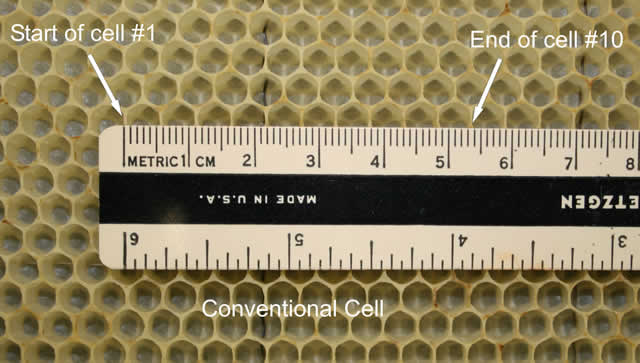

37. Small-cell comb foundation does not impede Varroa mite population growth in honey bee colonies. Berry, J.A., Owens, W.B., & K.S. Delaplane. 2009. Apidologie 41 (2010) 40–44 doi: 10.1051/apido/2009049
ABSTRACT In three independently replicated field studies, we compared biometrics of Varroa mite and honey bee populations in bee colonies housed on one of two brood cell types: small-cell (4.9 ± 0.08 mm cell width, walls inclusive) or conventional-cell (5.3 ± 0.04). In one of the studies, ending colony bee population was significantly higher in small-cell colonies (14994 ± 2494 bees) than conventional-cell (5653 ± 1082). However, small-cell colonies were significantly higher for mite population in brood (359.7 ± 87.4 vs. 134.5 ± 38.7), percentage of mite population in brood (49.4 ± 7.1 vs. 26.8 ± 6.7), and mites per 100 adult bees (5.1 ± 0.9 vs. 3.3 ± 0.5). With the three remaining ending Varroa population metrics, mean trends for small-cell were unfavorable. We conclude that small-cell comb technology does not impede Varroa population growth.

38. Susceptibility of Aethina tumida (Coleoptera: Nitidulidae) Larvae and Pupae to Entomopathogenic Nematodes. J. D. Ellis, S. Spiewok, K. S. Delaplane, S. Buchholz, P. Neumann, and W. L. Tedders. J. Econ. Entomol. 103(1): 1Ð9 (2010); doi: 10.1603/EC08384
ABSTRACT In this study, we evaluated the potential use of entomopathogenic nematodes as a control for the beetle Aethina tumida Murray (Coleoptera: Nitidulidae). In particular, we conducted 1) four screening bioassays to determine nematode (seven species, 10 total strains tested) and application level effects on A. tumida larvae and pupae, 2) a generational persistence bioassay to determine whether single inoculations with nematodes would control multiple generations of A. tumida larvae in treated soil, and 3) a field bioassay to determine whether the nematodes would remain efficacious in the field. In the screening bioassays, nematode efficacy varied significantly by tested nematode and the infective juvenile (IJ) level at which they were applied. Although nematode virulence was moderate in screening bioassays 1-3 (0-68% A. tumida mortality), A. tumida mortality approached higher levels in screening bioassay 4 (nearly 100% after 39 d) that suggest suitable applicability of some of the test nematodes as field controls for A. tumida. In the generational persistence bioassay, Steinernema riobrave Cabanillas, Poinar & Raulston 7-12 strain and Heterorhabditis indica Poinar, Karunaka & David provided adequate A. tumida control for 19 wk after a single soil inoculation (76-94% mortality in A. tumida pupae). In the field bioassay, the same two nematode species also showed high virulence toward pupating A. tumida (88-100%) mortality. Our data suggest that nematode use may be an integral component of an integrated pest management scheme aimed at reducing A. tumida populations in bee colonies to tolerable levels.
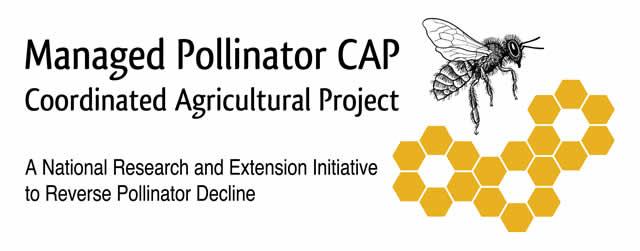
39. Coordinated responses to honey bee decline in the USA. J.S. Pettis & K.S. Delaplane. Apidologie review article doi 10.1051/apido/2010013
ABSTRACT In response to successive years of high honey bee mortality, the United States Congress mandated the US Department of Agriculture (USDA) to increase funding for research and education directed at reducing honey bee decline. The funding follows two administrative streams within USDA – one through the USDA Agricultural Research Service (ARS) and another through the USDA National Institute for Food and Agriculture (NIFA). ARS is funding an Areawide Project operated by the four ARS honey bee labs, and NIFA is funding through a competitive grant process a Coordinated Agricultural Project (CAP) operated by scientists and educators heavily represented by state colleges of agriculture. Each project – Areawide and CAP – is characterized as a consortium of investigators working in a coordinated manner to reduce institutional redundancy and optimize the discovery and delivery of sustainable bee management practices to client beekeepers.
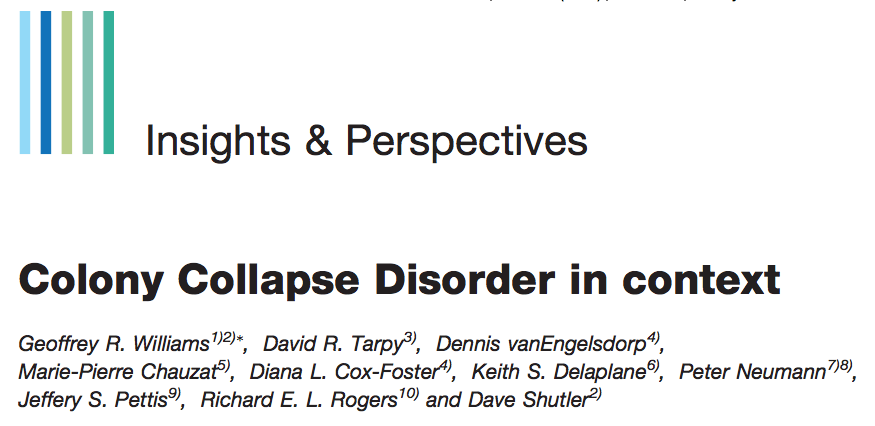
40. Colony Collapse Disorder in context. Geoffrey R. Williams, David R. Tarpy, Dennis vanEagelsdorp, Marie-Pierre Chauzat, Diana L. Cox-Foster, Keith S. Delaplane, Peter Neumann, Jeffery S. Pettis, Richard E. L. Rogers and David Shutler. Insights & Perspectives article doi 10.1002/bies.201000075
ABSTRACT There is a growing consensus that colony mortality is the product of multiple factors, both known and unknown, acting singly or in combination. Considering the reliance that modern agriculture places on honey bees for pollination, coordinated efforts are urgently needed to understand and mitigate these losses. The first step in these efforts should be to objectively discriminate among types of colony mortality occurring worldwide. This will permit a more informed and appropriate allocation of research efforts into CCD specifically and other causes of mortality in general.

41. A test for interactions between Varroa destructor (Acari: Varroidae) and Aethina tumida (Coleoptera: Nitidulidae) in colonies of honey bees (Hymenoptera: Apidae). Delaplane, K.S., J.D. Ellis, and W.M. Hood (2010) Annals of the Entomological Society of America
ABSTRACT Field surveys indicate that declining colonies of honey bees, Apis mellifera L. (Hymenoptera: Apidae), suffer simultaneously from multiple stress factors, raising concern that multiple stressors could be interacting to compound bee stress in an additive or synergistic fashion. We tested two null hypotheses: 1) Varroa destructor Anderson & Trueman (Acari: Varroidae) (=varroa) and Aethina tumida Murray (Coleoptera: Nitidulidae) do not interact such that the number of one affects the number or density of the other and 2) bee damage from one does not change in response to changing levels of the other. In a split-split plot design replicated in 2 yr and two states, experimental apiaries were established and each aminpulated to achieve one of five average + SE colony adult A. tumida populations: 0; 285 + 6; 721 + 5; 1,544 + 14; or 3,175 + 90. Within each apiary, the population of varroa mites in each colony was manipulated to achieve one of three average + SE colony mite populations: 763 + 121; 1,111 + 155; or 1,856 + 300. On a one-way basis, there was a predictable increase in measures of bee morbidity with increasing densities of each pest. Colony varroa mite levels decreased as apiary-wide A. tumida levels increased. In contrast, conly levels of the honey bee mite, Acarapis woodi (Rennie) (Acari: Tarsonemidae), increased as colony varroa levels increased. Concerning measures of bee morbidity, varroa and A. tumida did not interact such that damage by one was affected by changing levels of the other. A treatment threshold established for varroa before the arrival of A. tumida has not changed during the years since A. tumida has become established in the region.
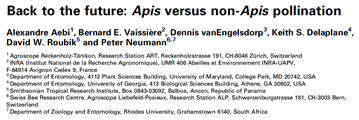
42. Back to the Future: Apis vs Non-Apis Pollination
ABSTRACT Pollination scientists express a joint opinion that biases against, or advocacy for, certain classes of pollinator are ill-founded and counterproductive. Instead, these authors argue that scientists should cooperate to ensure sustainable pollination services by "all" pollinators.
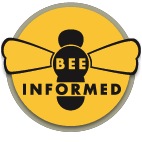
43. The Bee Informed Partnership: Using Beekeeper's Real-World Experience to Solve Beekeepers' Real-World Problems
ABSTRACT The Bee Informed Partnership (BIP) received a 5-year Coordinated Agriculture Project (CAP) grant from the National Institute of Food and Agriculture (NIFA) to use an epidemiological approach to identify risk factors associated with honey bee colony losses. An epidemiological approach identifies factors that contribute to disease occurrence in a population, advocates for and promotes ways to reduce exposure to risk factors, and seeks to reduce disease incidence at the population level.
44. JAR standard methods for estimating strength parameters of Apis mellifera colonies
ABSTRACT This paper covers measures of field colony strength, by which we mean population measures of adult bees and brood. There are generally two contexts in which an investigator wishes to measure colony strength: 1. at the beginning of a study as part of manipulations to produce uniform colonies and reduce experimental error and; 2. as response variables during or at the end of an experiment. Moreover, there are two general modes for measuring colony strength: 1. an objective mode which uses empirical measures and; 2. a subjective mode that relies on visual estimates by one or more observers. There is a third emerging mode for measuring colony strength; 3. computer-assisted digital image analysis. A final section deals with parameters that do not directly measure colony strength yet give important indicators of colony state: flight activity at the hive entrance; comb construction; and two proxy measures of colony fitness: production of queen cels and drone brood.
45. JAR standard methods for varroa research
SUMMARY Very rapidly after Varroa destructor invaded apiaries of Apis mellifera, the devastating effect of this mite prompted an active research effort to understand and control this parasite. Over a few decades, varroa has spread to most countries exploiting A. mellifera. As a consequence, a large number of teams have worked with this organism, developing a diversity of research methods. Often different approaches have been followed to achieve the same goal. The diversity of methods made the results difficult to compare, thus hindering our understanding of this parasite. In this paper, we provide easy to use protocols for the collection, identification, diagnosis, rearing, breeding, marking and measurement of infestation rates and fertility of V. destructor. We also describe experimental protocols to study orientation and feeding of the mite, to infest colonies or cells and measure the mite's susceptibility to acaricides. Where relevant, we describe which mite should be used for bioassays since their behaviour is influenced by their physiological state. We also have a method to determine the damage threshold above which varroa damages colonies. This tool is fundamental to be able to implement integrated control concepts. We have described pros and cons for all methods for the user to know which method to use under which circumstances. These methods could be embraced as standards by the community when designing and performing research on V. destructor.

46. Inorganic nitrogen derived from foraging honey bees could have adaptive benefits for the plants they visit
ABSTRACT In most terrestrial ecosystems, nitrogen (N) is the most limiting nutrient for plant growth. Honey bees may help alleviate this limitation because their feces (frass) have high concentration of organic nitrogen that may decompose in soil and provide inorganic N to plants. However, information on soil N processes associated with bee frass is not available.
The objectives of this work were to:
1) estimate the amount of bee frass produced by a honey bee colony, and
2) evaluate nitrogen mineralization and ammonia volatilization from bee frass when surface applied or incorporated into soil.
Two cage studies were conducted to estimate the amount of frass produced by a 5000-bee colony, and three laboratory studies were carried out in which bee frass, surface-applied or incorporated into soil, was incubated at 25oC for 15 to 45 days. The average rate of bee frass production by a 5,000-bee colony was estimated at 2.27 to 2.69 g N month−1. Nitrogen mineralization from bee frass during 30 days released 20% of the organic N when bee frass was surface applied and 34% when frass was incorporated into the soil. Volatilized NH3 corresponded to 1% or less of total N. The potential amount of inorganic N released to the soil by a typical colony of 20,000 bees foraging in an area similar to that of the experimental cages (3.24 m2) was estimated at 0.62 to 0.74 g N m−2 month−1 which may be significant at a community scale in terms of soil microbial activity and plant growth.
Thus, the deposition of available N by foraging bees could have adaptive benefits for the plants they visit, a collateral benefit deriving from the primary activity of pollination.
47. Revisiting powdered sugar for varroa control on honey bees (Apis mellifera L)
ABSTRACT Dusting bees with powdered sugar has been examined as a remedial control for Varroa destructor Anderson and Trueman (varroa). Two modes of action have been proposed: one being that fine dust impedes the locomotion of phoretic mites and induces them to fall off bees (Ramirez, 1994), and another being that dust induces a grooming response in bees that similarly dislodges mites (Macedo et al., 2002). When measured as a percentage of phoretic mites dislodged, powdered sugar dusting has achieved experimental knock-down rates ranging from 77% (Aliano and Ellis, 2005) to more than 90% (Fakhimzadeh, 2001; Macedo et al., 2002), but a persistent problem has been translating these kinds of results into practical field applications.
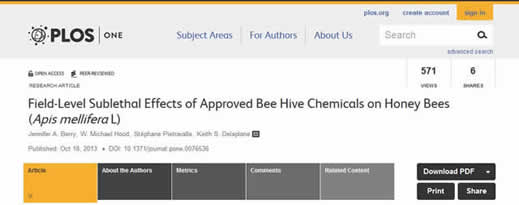
48. Field-Level Sublethal Effects of Approved Bee Hive Chemicals on Honey Bees
ABSTRACT In a study replicated across two states and two years, we tested the sublethal effects on honey bees of the miticides Apistan (tau fluvalinate) and Check Mite+ (coumaphos) and the wood preservative copper naphthenate applied at label rates in field conditions. A continuous covariate, a colony Varroa mite index, helped us disambiguate the effects of the chemicals on bees while adjusting for a presumed benefit of controlling mites. Mite levels in colonies treated with Apistan or Check Mite+ were not different from levels in non-treated controls. Experimental chemicals significantly decreased 3-day brood survivorship and increased construction of queen supercedure cells compared to non-treated controls. Bees exposed to Check Mite+ as immatures had higher legacy mortality as adults relative to non-treated controls, whereas bees exposed to Apistan had improved legacy mortality relative to non-treated controls. Relative to non-treated controls, Check Mite+ increased adult emergence weight. Although there was a treatment effect on a test of associative learning, it was not possible to statistically separate the treatment means, but bees treated with Apistan performed comparatively well. And finally, there were no detected effects of bee hive chemical on colony bee population, amount of brood, amount of honey, foraging rate, time required for marked released bees to return to their nest, percentage of released bees that return to the nest, and colony Nosema spore loads. To our knowledge, this is the first study to examine sublethal effects of bee hive chemicals applied at label rates under field conditions while disambiguating the results from mite control benefits realized from the chemicals. Given the poor performance of the miticides at reducing mites and their inconsistent effects on the host, these results defend the use of bee health management practices that minimize use of exotic hive chemicals.
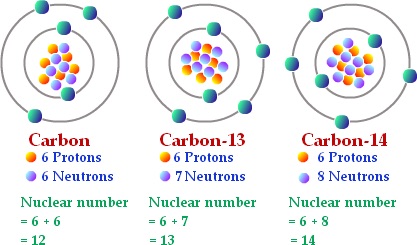
49. Distinguishing between feral and managed honey bees using stable carbon isotopes.
ABSTRACT The ability to distinguish feral and managed honeybees (Apis mellifera) has applications in studies of population genetics, parasite transmission, pollination, interspecific interactions, and bee breeding. We evaluated a diagnostic test based on theoretical differences in stable carbon isotope ratios generated by supplemental feeding. We evaluated (1) if carbon isotope ratios can distinguish feral and managed honeybees and (2) the temporal persistence of the signal after discontinuation of supplemental feeding. We compared carbon isotope ratios from four types of experimental colonies: feral, managed with and without supplemental feed, and managed with 13 C-labeled glucose added to supplemental feed. There was a significant difference between the isotopic signatures of colonies receiving supplemental feed and unfed feral colonies. This difference, however, only persisted for a few weeks after supplemental feeding was discontinued, suggesting that this method may work best under a narrow range of conditions. This work highlights the potential for exploiting temporal turnover of carbon in bee tissues as a tool for studying nutrient flow in honeybee colonies.

50. Nectar Minerals as Regulators of Flower Visitation in Stingless Bees and Nectar Hoarding Wasps
ABSTRACT Various nectar components have a repellent effect on flower visitors, and their adaptive advantages for the plant are not well understood. Persea americana (avocado) is an example of a plant that secretes nectar with repellent components. It was demonstrated that the mineral constituents of this nectar, mainly potassium and phosphate, are concentrated enough to repel honey bees, Apis mellifera, a pollinator often used for commercial avocado pollination. Honey bees, however, are not the natural pollinator of P. americana, a plant native to Central America. In order to understand the role of nectar minerals in plant—pollinator relationships, it is important to focus on the plant’s interactions with its natural pollinators. Two species of stingless bees and one species of social wasp, all native to the Yucatan Peninsula, Mexico, part of the natural range of P. americana, were tested for their sensitivity to sugar solutions enriched with potassium and phosphate, and compared with the sensitivity of honey bees. In choice tests between control and mineral-enriched solutions, all three native species were indifferent for mineral concentrations lower than those naturally occurring in P. americana nectar. Repellence was expressed at concentrations near or exceeding natural concentrations. The threshold point at which native pollinators showed repellence to increasing levels of minerals was higher than that detected for honey bees. The results do not support the hypothesis that high mineral content is attractive for native Hymenopteran pollinators; nevertheless, nectar mineral composition may still have a role in regulating flower visitors through different levels of repellency.
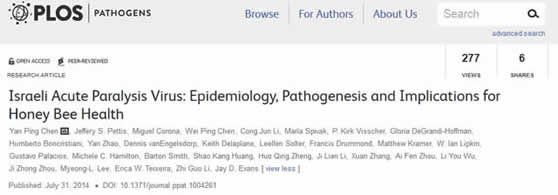
51. Israeli Acute Paralysis Virus: Epidemiology, Pathogenesis and Implications for Honey Bee Health
ABSTRACT Israeli acute paralysis virus (IAPV) is a widespread RNA virus of honey bees that has been linked with colony losses. Here we describe the transmission, prevalence, and genetic traits of this virus, along with host transcriptional responses to infections. Further, we present RNAi-based strategies for limiting an important mechanism used by IAPV to subvert host defenses. Our study shows that IAPV is established as a persistent infection in honey bee populations, likely enabled by both horizontal and vertical transmission pathways. The phenotypic differences in pathology among different strains of IAPV found globally may be due to high levels of standing genetic variation. Microarray profiles of host responses to IAPV infection revealed that mitochondrial function is the most significantly affected biological process, suggesting that viral infection causes significant disturbance in energy-related host processes. The expression of genes involved in immune pathways in adult bees indicates that IAPV infection triggers active immune responses. The evidence that silencing an IAPV-encoded putative suppressor of RNAi reduces IAPV replication suggests a functional assignment for a particular genomic region of IAPV and closely related viruses from the Family Dicistroviridae, and indicates a novel therapeutic strategy for limiting multiple honey bee viruses simultaneously and reducing colony losses due to viral diseases. We believe that the knowledge and insights gained from this study will provide a new platform for continuing studies of the IAPV–host interactions and have positive implications for disease management that will lead to mitigation of escalating honey bee colony losses worldwide.
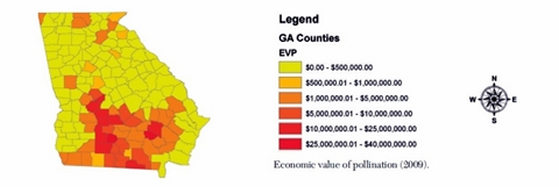
52. An Economic Valuation of Biotic Pollination Services in Georgia
ABSTRACT As agriculture faces documented decline in bees and other insect pollinators, empirical assessments of potential economic losses are critical for contextualizing the impacts of this decline and for prioritizing research needs. For the state of Georgia, we show that the annual economic value of biotic pollinators is substantial—US$367 million, equivalent to 13 percent of the total production value of crops studied and 3 percent of the total production value of Georgia’s agricultural sector. Our unique
Geographic Information Systems analysis reveals an irregular pattern of vulnerability. While the Georgia counties displaying the highest economic values of pollination are clustered in southern Georgia, those with the highest dependency on pollinators in terms of their contribution to crop production value are more dispersed throughout the state.
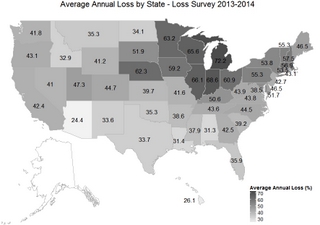
53. A national survey of managed honey bee 2013–2014 annual colony losses in the USA
ABSTRACT Honey bee colony losses are a major concern in the USA and across the globe. Long-term data on losses are critical for putting yearly losses in context. US colony loss surveys have been conducted yearly since the winter of 2006–2007. Here, we report the results from the eighth annual survey on winter losses and the second annual survey of summer and annual losses. There were 7425 valid respondents (7123 backyard, 190 sideline, and 112 commercial beekeepers) managing 497,855 colonies, 19 % of the total US colonies. Total losses reported were 19.8% [95% CI 19.3–20.3 %] over the summer, 23.7 % [95% CI 23.3–24.1 %] over the winter, and 34.1 % [95 % CI 33.6–34.6 %] for the whole year. Average losses were 15.1 % [95 % CI 14.5–15.7 %] over the summer, 44.8 % [95 % CI 43.9–45.7 %] over the winter, and 51.1 % [95 % CI 50.2–51.6 %] for the whole year. While total winter loss was one of the lowest reported in 8 years, 66%of all beekeepers had higher losses than they deemed acceptable.
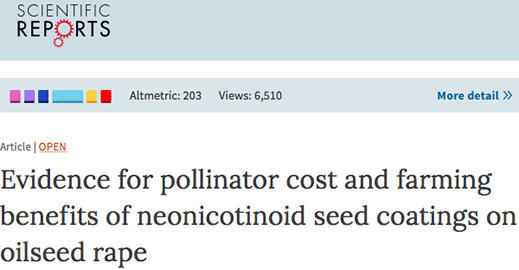
54. Evidence for pollinator cost and farming benefits of neonicotinoid seed coatings on oilseed rape
ABSTRACT Chronic exposure to neonicotinoid insecticides has been linked to reduced survival of pollinating insects at both the individual and colony level, but so far only experimentally. Analyses of large-scale datasets to investigate the real-world links between the use of neonicotinoids and pollinator mortality are lacking. Moreover, the impacts of neonicotinoid seed coatings in reducing subsequent applications of foliar insecticide sprays and increasing crop yield are not known, despite the supposed benefits of this practice driving widespread use. Here, we combine large-scale pesticide usage and yield observations from oilseed rape with those detailing honey bee colony losses over an 11 year period, and reveal a correlation between honey bee colony losses and national-scale imidacloprid (a neonicotinoid) usage patterns across England and Wales. We also provide the first evidence that farmers who use neonicotinoid seed coatings reduce the number of subsequent applications of foliar insecticide sprays and may derive an economic return. Our results inform the societal discussion on the pollinator costs and farming benefits of prophylactic neonicotinoid usage on a mass flowering crop.

55. Honey Bee Colonies Headed by Hyperpolyandrous Queens Have Improved Brood Rearing Efficiency and Lower Infestation Rates of Parasitic Varroa Mites
ABSTRACT A honey bee queen mates on wing with an average of 12 males and stores their sperm to produce progeny of mixed paternity. The degree of a queen’s polyandry is positively associated with measures of her colony’s fitness, and observed distributions of mating number are evolutionary optima balancing risks of mating flights against benefits to the colony. Effective mating numbers as high as 40 have been documented, begging the question of the upper bounds of this behavior that can be expected to confer colony benefit. In this study we used instrumental insemination to create three classes of queens with exaggerated range of polyandry– 15, 30, or 60 drones. Colonies headed by queens inseminated with 30 or 60 drones produced more brood per bee and had a lower proportion of samples positive for Varroa destructor mites than colonies whose queens were inseminated with 15 drones, suggesting benefits of polyandry at rates higher than those normally obtaining in nature. Our results are consistent with two hypotheses that posit conditions that reward such high expressions of polyandry: (1) a queen may mate with many males in order to promote beneficial non-additive genetic interactions among subfamilies, and (2) a queen may mate with many males in order to capture a large number of rare alleles that regulate resistance to pathogens and parasites in a breeding population. Our results are unique for identifying the highest levels of polyandry yet detected that confer colony-level benefit and for showing a benefit of polyandry in particular toward the parasitic mite V. destructor.

56. Distance Between Honey Bee Apis mellifera Colonies Regulates Populations of Varroa destructor at a Landscape Scale
ABSTRACT Inter-colony distance of Apis mellifera significantly affects colony numbers of the parasitic mite Varroa destructor. We set up 15 apiaries, each consisting of two colonies. Each apiary pair was assigned an inter-colony distance of 0, 10, or 100 m. Colonies were rendered nearly mite-free, then one colony in each pair was seeded with 300 female mites (mite-donor colony), while the other remained uninoculated (mite-recipient colony). After 4 months of monitoring, a whole-model analysis showed that apiaries in which colonies were spaced 100 m apart contained lower average mite numbers than 0 or 10 m apiaries. There were interactions among colony type, distance, and sampling date; however, when there were significant differences, mite numbers were always lower in 100 m apiaries than 10 m apiaries. These findings pose the possibility that Varroa populations are resource regulated at a landscape scale: near-neighbor colonies constitute reproductive resource for mites in the form of additional bee brood.

57. A national survey of managed honey bee 2014-2015 annual colony losses in the USA
ABSTRACT Declines of pollinators and high mortality rates of honey bee colonies are a major concern, both in the USA and globally. Long-term data on summer, winter, and annual colony losses improve our understanding of forces shaping the viability of the pollination industry. Since the mass die-offs of colonies in the USA during the winter of 2006–2007, gen- erally termed “Colony Collapse Disorder” (CCD), annual colony loss surveys have been conducted. These surveys gage colony losses among beekeepers of all operation sizes, recruited to participate via regional beekeeping organiza- tions, phone calls, and postal mail. In the last three years, these surveys include summer and annual losses in addition to winter losses. Winter losses in this most recent survey include 5,937 valid participants (5,690 backyard, 169 sideline, and 78 commercial beekeepers), collectively managing 414,267 colonies on 1 October 2014 and constituting 15.1% of the estimated 2.74 million managed colonies in the USA. Annual losses are typically higher than either winter or sum- mer losses, as they calculate losses over the entire year. Total reported losses were 25.3% [95% CI 24.7–25.9%] over the summer, 22.3% [95% CI 21.9–22.8%] over the winter, and 40.6% [95% CI 40.0–41.2%] for the entire 2014–2015 beekeeping year. Average losses were 14.7% [95% CI 14.0–15.3%] over the summer, 43.7% [95% CI 42.8–44.6%] over the winter, and 49.0% [95% CI 48.1–50.0%] over the entire year. While total winter losses were lower in 2014–2015 than in previous years, summer losses remained high, resulting in total annual colony losses of more than 40% during the survey period. This was the first year that total losses were higher in the summer than in the winter, explained in large part by commercial beekeepers reporting losses of 26.2% of their managed colonies during summer, compared to 20.5% during winter. Self-identified causes of overwintering mortality differed by operation size, with smaller backyard beekeepers generally indicating colony management issues (e.g., starvation, weak colony in the fall), in contrast to commercial beekeepers who typically emphasize parasites or factors outside their control (e.g., varroa, nosema, queen failure). More than two-thirds of all beekeepers (67.3%) had higher colony losses than they deemed acceptable.

58. Fine scale population genetic structure of Varroa destructor, an ectoparasitic mite of the honey bee (Apis mellifera)
ABSTRACT Varroa destructor is an obligate ectoparasitic mite and the most important biotic threat currently facing honey bees (Apis mellifera ). We used neutral microsatellites to analyze previously unreported fine scale population structure of V. destructor , a species characterized by extreme lack of genetic diversity owing to multiple bottleneck events, haplodiploidy, and primarily brother-sister matings. Our results surprisingly indicate that detectable hierar- chical genetic variation exists between apiaries, between colonies within an apiary, and even within colonies. This finding of within-colony parasite diversity provides empirical evidence that the spread of V. destructor is not accomplished solely by vertical transmission but that horizontal transmission (natural or human-mediated) must occur regularly.
62. Hodges, C.R.L., K.S. Delaplane, and B.J. Brosi. 2018. Textured hive interiors increase honey bee (Hymenoptera: Apidae) propolis hoarding behavior. Journal of Economic Entomology toy363
Numerous papers have shown that propolis contributes favorably to worker honey bee (Apis mellifera L.) immune response and colony social immunity. Moreover, resin-foraging specialists are more sensitive than pollen foragers to tactile information in the nest interior, and they respond to these stimuli by collecting more resin. In this study, we show that in-hive propolis deposition is increased, compared with nonmodified controls, with any one of the three methods for increasing textural complexity of hive wall interior surfaces: 1) plastic propolis trap material stapled to wall interior, 2) parallel saw kerfs cut into wall interior, or 3) roughening wall interior with a mechanized wire brush. Pairwise comparisons showed that propolis deposition was not significantly different among the three textural treatments; however, textural treatments interacted with time to show a more consistent benefit from plastic propolis trap material or roughened interior surface over saw kerfs. Although direct health benefits were not measured, this work shows that it is comparatively simple to increase propolis deposition above background levels by increasing textural stimuli in hive interiors.

